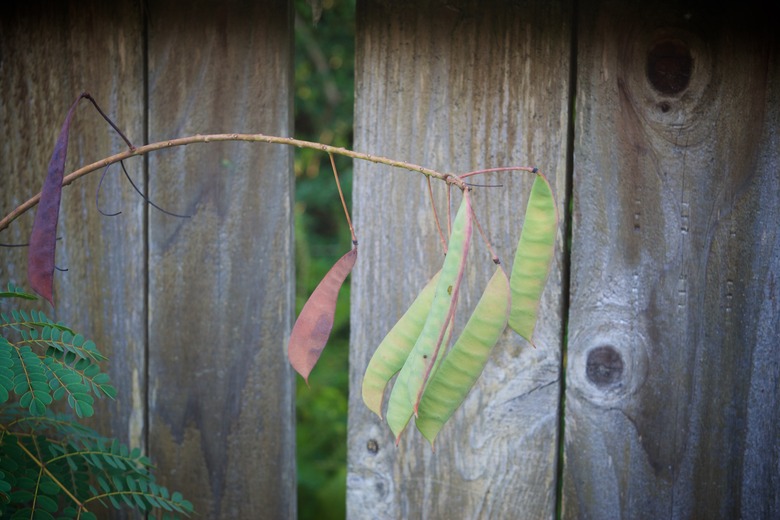How To Prune A Mexican Bird Of Paradise
The Mexican bird of paradise (Caesalpinia mexicana or Erythrostemon mexicanus) is a large shrub or small tree grown for its showy bright yellow flower clusters, which earned the shrub its common name.
Sometimes called Mexican holdback, it grows best in frost-free climates within USDA hardiness zones 9 to 11, where it's added to xeriscape plantings or grown in hot, dry areas of the garden where other plants may not survive.
Mexican bird of paradise plants are low maintenance, and most need very little pruning unless you want to train the shrub into a tree-like shape. Otherwise, they only need pruning to remove dead growth and faded flowers.
Pruning Mexican Bird of Paradise
Although a Mexican bird of paradise tree does not need regular pruning, pruning is still an important part of its care. It will improve its appearance, keep it healthy and prevent it from self-sowing in the garden.
Tip
Before pruning, be sure to dip your pruning shears in disinfectant to kill off any bacteria or fungal spores that might be on the blades from previous pruning sessions.
Removing Dead Branches
Mexican bird of paradise is not as frost tolerant as other perennials, so cold damage is likely to occur in cold-winter areas. The dead or damaged branches look untidy and can also open up the entire shrub to infection if not pruned away.
- Remove the dead and frost-damaged growth by snipping it off at the base.
- Make the cut on healthy growth so that all the dead growth is removed.
- Wait until after the last spring frost to prune off frost-damaged growth.
In hard freezes, badly damaged Mexican bird of paradise shrubs can die back to the roots. The shrub will regrow in early spring after temperatures warm.
Creating a Tree-Like Shape
Mexican bird of paradise shrubs reach a mature height of 15 to 25 feet high with a 12- to 18-foot spread. They have a rounded, spreading appearance that requires a large space. Pruning to create a tree-like shape will help these big, bold shrubs fit into a smaller yard, but it requires constant upkeep, because this species produces sprouts or suckers at the base of the trunk.
- Prune to create a tree-like shape by removing the lateral branches from the bottom half or two-thirds of the main trunk, depending on how high you want the canopy.
- Make the cuts nearly flush with the bark along the trunk. The cuts should be made at a slight angle to allow water to run off the cut edge.
The initial pruning should be done in late winter or early spring when the plant is dormant. While you can remove the suckering growth from the trunks year round, it's especially needed during the growing season when the shrub is actively growing.
Deadheading Mexican Bird of Paradise
Mexican bird of paradise trees produce showy yellow flowers in the late spring and summer months, which stand out against the shrub's dark green, fern-like foliage. The flowers last for a week or so, during which time they are visited by hummingbirds, bees and other pollinators.
As the flowers start to fade, they should be pruned to prevent the shrub from setting seed. This process is called "deadheading," and it will help keep the shrub from self-sowing in your garden.
- Snip off the flower clusters after most of the flowers have faded.
- Make the cut at the base of the cluster near the stem where it attaches to the main branch.
Growing Mexican Bird of Paradise
Mexican bird of paradise shrubs have a fast growth rate and are highly drought tolerant once established, but it is important to grow them under the right conditions and to provide the best possible care.
Planting Mexican Bird of Paradise
**Growing Conditions:** Plant Mexican bird of paradise shrubs in full sun and well-draining soil. Avoid planting in areas with heavy, clay-based soil that does not have good drainage, because it can cause root problems in these shrubs.
**Spacing:** Choose a growing location that is at least 10 feet away from other shrubs and structures so that it has room to spread its branches.
Caring for Mexican Bird of Paradise
**Water:** The exact water needs of a Mexican bird of paradise vary depending on soil type. Shrubs grown in soil high in organic matter need less frequent watering than those grown in gritty, sandy soil. Water once per month during the growing season. Stop watering during the cooler months.
**Fertilizer:** Feed in spring using low-nitrogen fertilizer or spread a thin layer of compost around the base of the shrub. Overfeeding can cause problems for these shrubs, so apply the fertilizer at half-strength.
Tip
Mexican bird of paradise shrubs propagate well from seed, so it's easy to start your own shrub at home!

